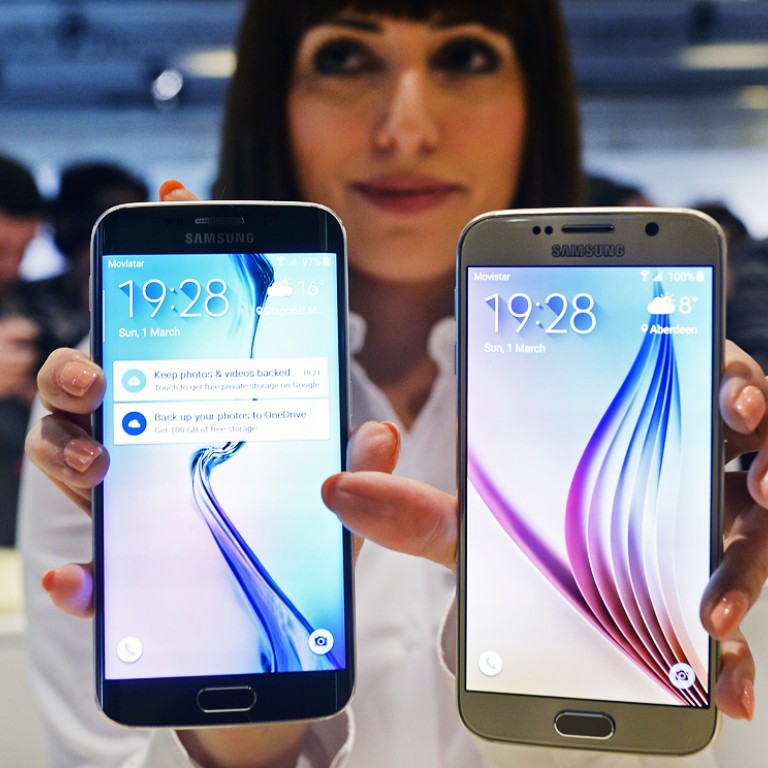
Samsung unveils sleek Galaxy S6 smartphones to take on Apple
Samsung unveiled its new Galaxy S6 and S6 Edge smartphones as it seeks to claw back market share following Apple's launch of the iPhone 6 and 6 Plus last year.
Samsung reignited the battle for the number one smartphone as it took the wraps off its metal and glass Galaxy S6 and sleeker, curved Galaxy S6 Edge, pitching directly against the hugely popular Apple iPhone 6.
While the smartphone popularity contest in China is largely between Apple and homegrown Xiaomi, Samsung is aiming to claw back market share there with the launch of the S6 range, which goes on sale globably on April 10.
Samsung is yet to disclose pricing or where the phones will appear first but said the phones would go on sale in 20 countries.
Watch: Samsung unveils new Galaxy S6 smartphones
The South Korean electronics giant unveiled its revamped phone on the eve of Monday's opening of the 2015 Mobile World Congress in Barcelona, seeking a confidence boost needed to reviving its flagging fortunes.
Wireless charging, curved screen edges, mobile payment software and a sharper camera form the core of Samsung’s response to the runaway success of the iPhone 6 and 6 Plus, of which Appple sold a record-breaking 74.5 million in the three months to the end of December.
"We will never rest on our past achievements. We listened to our customers. We learned from our successes and missteps,” Samsung chief executive Shin Jong-kyun Shin told a 1,000-strong audience. “We pushed forward new technologies, new ideas, that’s how we have offered better products and new products first.”

The Galaxy S6 also strips out many of Samsung’s unpopular in-house software apps that infuriated users by gobbling memory. It and the Galaxy S6 Edge will also be powered by Samsung’s new 64-bit, 14-nanometer Exynos processors, analysts said.
"This offers the promise of delivering better overall margins for Samsung and, in time, differentiated performance from rivals, as Apple has achieved" with their own chip used in iPhones, said Ian Fogg, an analyst at IHS Technology.
"But it’s a high-risk, high-reward strategy," he added.
The plastic look of Samsung's previous flagship smartphone, the Galaxy S5, was a turn-off for consumers and was a factor in the company's falling smartphone sales and first annual earnings fall in three years in 2014.
We listen to our customers and we learn from our missteps
The annual mobile-technology roadshow in northern Spain has drawn an estimated 85,000 people. All of Apple's major rivals will unveil new products in the course of the-five day event.
Also on Sunday, Samsung’s South Korean rival LG presented its latest entry to the premium-smartphone market, the curved Flex 2. Crafted to sit naturally in the user’s hand, the Flex 2 is the biggest of the new premium smartphones, but its screen resolution and camera are inferior to the Galaxy S6.
Taiwan's HTC delivered an all-metal phone, the One M9. It features a sharp, 20-megapixel camera and Dolby surround sound, but otherwise has no obvious aesthetic differences from last year’s M8.
Microsoft is expected to unveil mid-range offerings under its Lumia brand today.
According to IDC, Samsung’s market share in smartphones in China in the second half of 2014 dropped from 11 per cent to just 7.9 per cent, while Apple's market share rose from 5 per cent to 12.3 per cent with the introduction of the iPhone 6 and 6 Plus.
Leading the pack still was Xiaomi, a rising China technology star with global ambitions, though its marekt share dropped to 13.7 per cent from 14.8 per cent.
Additional reporting by Reuters

